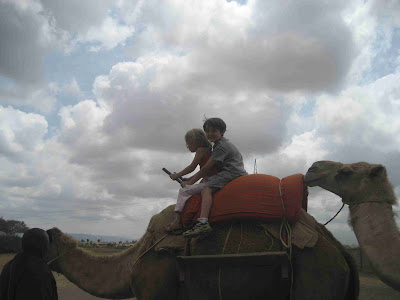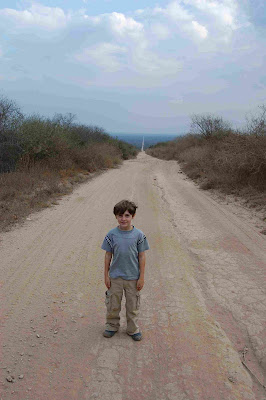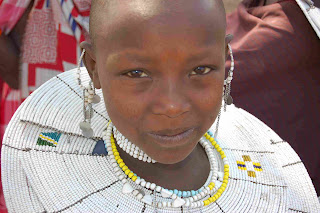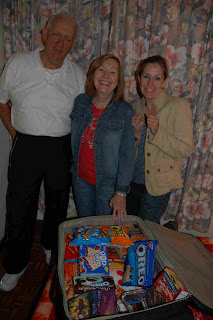On the way to the Park, we passed Manyara Ranch that was experiencing a very large wildfire on the south end. We convinced our driver Ukadi leave the tarmac road and travel cross-country to the fire’s location five miles away. Driving past Maasai women going to market across the denuded plains, it was obvious Ukadi was not quite comfortable with this excursion. When we reached a small korongo (dry river bed) that we thought was crossable, Ukadi refused. Charlie and Scott got out and walked across. Ukadi accompanied them to check for lions, leaving the womenfolk in the truck. Er, locked in the truck.

After walking fifteen minutes across the open plain past zebras and wildebeest, the fire was still pretty far off. Ukadi decided to return to the truck, make a try across the korongo, and pick them up. He made it across and we drove up to the fire. It was huge. Already 1000’s of acres, it was spreading rapidly across a large flaming front with 6 foot flames igniting the grassland. Acacia and palm shrubs torched regularly to 20 feet.

Silhouetted against the fire were dozens of young Maasai carrying natural beaters (palm fronds) trying to put out the fire. They would work the flanking fire in groups of 6-10. Occasional a few would break off and run in front of the fire to tackle the head fire, almost as part of some sort of dare. Then they would run back to the main group laughing. It was fascinating. Because of the variation in grass height, flames were very low in heavily grazed areas. Maasai would retreat to these areas if the flanking fire became a head fire.
Throughout this drama zebra, giraffe, wildebeest, and gazelle grazed nearby.
Eventually Scott satisfied his fire curiosity and we traveled to the park.
During our Tarangire evening game drive, Ukadi, heard there was a lion nearby. Flush with confidence from his korongo crossing at Manyara he decided to take a short-cut across a steep korongo. On our way down, you guessed it, we got stuck in the deep sand. We tried to rock the truck back and forth as he gunned the engine, but we just got stuck deeper. We tried to put rocks and sticks under the tires but they didn’t work and we got stuck deeper. As the sun began to set on the horizon our worries increased. Angela and Annie began scouting which part of the truck would be the best sleeping spots.

Ukadi and Scott went up the valley looking for another truck to flag down. Fortunately they found a truck with one of the other tour companies. Much discussion ensued in Swahili between Ukadi and the driver while his truckload of Indian tourists snapped pictures. Eventually the other driver confidently sauntered over to our vehicle and heaved his girth into the driver’s seat and commanded Angela, Charlie and Annie to “sit down and hold on!” He gunned the engine, spun the tires and got the truck stuck deeper.

With much grunting and groaning he returned to his truck, got a chain and attached it to ours. Ukadi got in. With no notice he floored his truck. The chain went taught and our truck jerked up the slope bouncing high over bumps and several times looked like it was going to tip over. But he got it out. The look on Ukadi’s face was a mix of relief and terror.
The next day we were scheduled to meet some American visitors at Charles and Lara Foley’s elephant research camp. Their camp is situated in a valley along a wide korongo. The Foley’s have two girls (8 months and 3 years). Their camp consisted of six typical safari tents for them, their nanny, two camp staff, kitchen, office with front porch/living area, and guests. The setting was beautiful with a canopy of acacias and sausage trees providing shade. As we visited in the central dinning area, elephants moved on either side of the camp traveling back and forth along the korongo or valley to and from the Tarangire River.

While Charles and I talked, Lara and Angela took the kids to the riverbed and explored the latest poop to see what the elephants, porcupines, and zebra had eaten. The kids dug right in but Angela couldn’t bring herself to partake. But they did get to bring home some porcupine quills!

On the way back into town, Charlie and Annie begged to stop at their favorite bar to search outside for bottle caps, among the filth. Throughout our walks around Arusha, searching for bottle caps outside bars and small stores was a major source of entertainment for the kids. Scott and Angela just called it yuckers and followed up with a lot of bottle cap washing and hand sanitizing.


All a fitting end to our Africa experience.














































